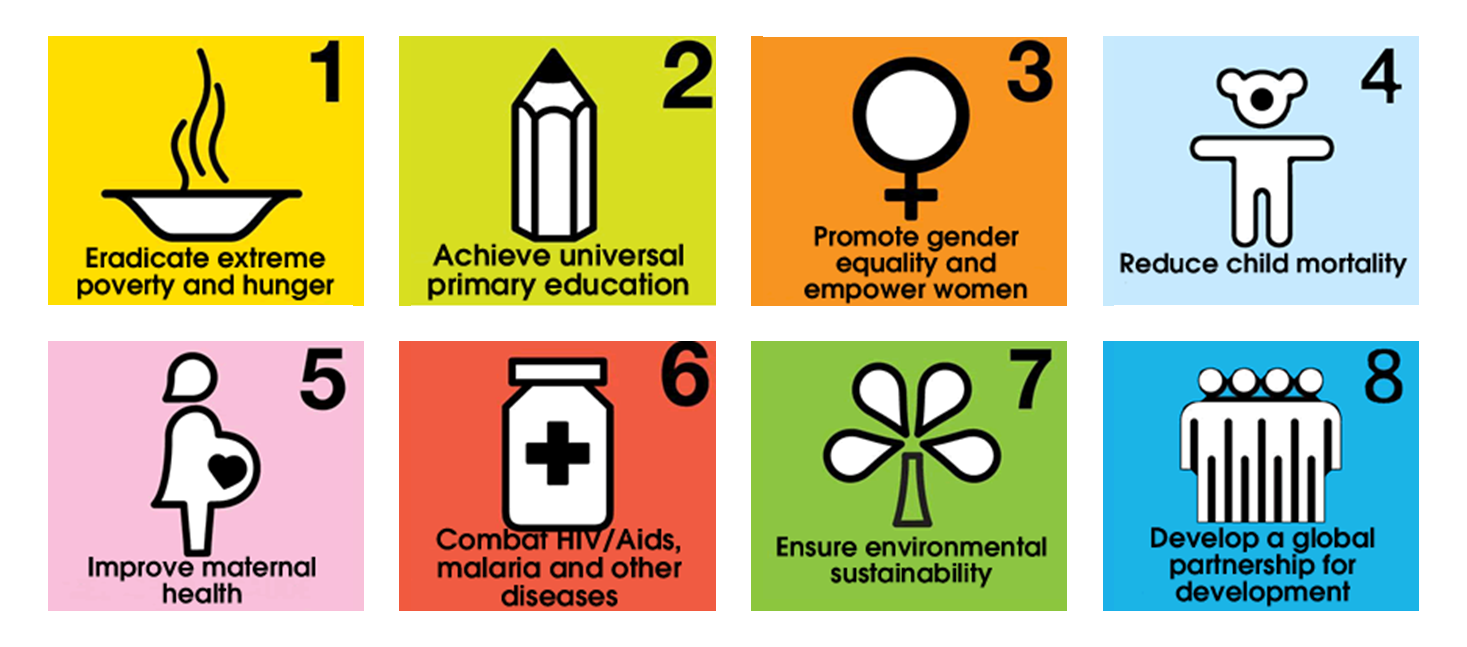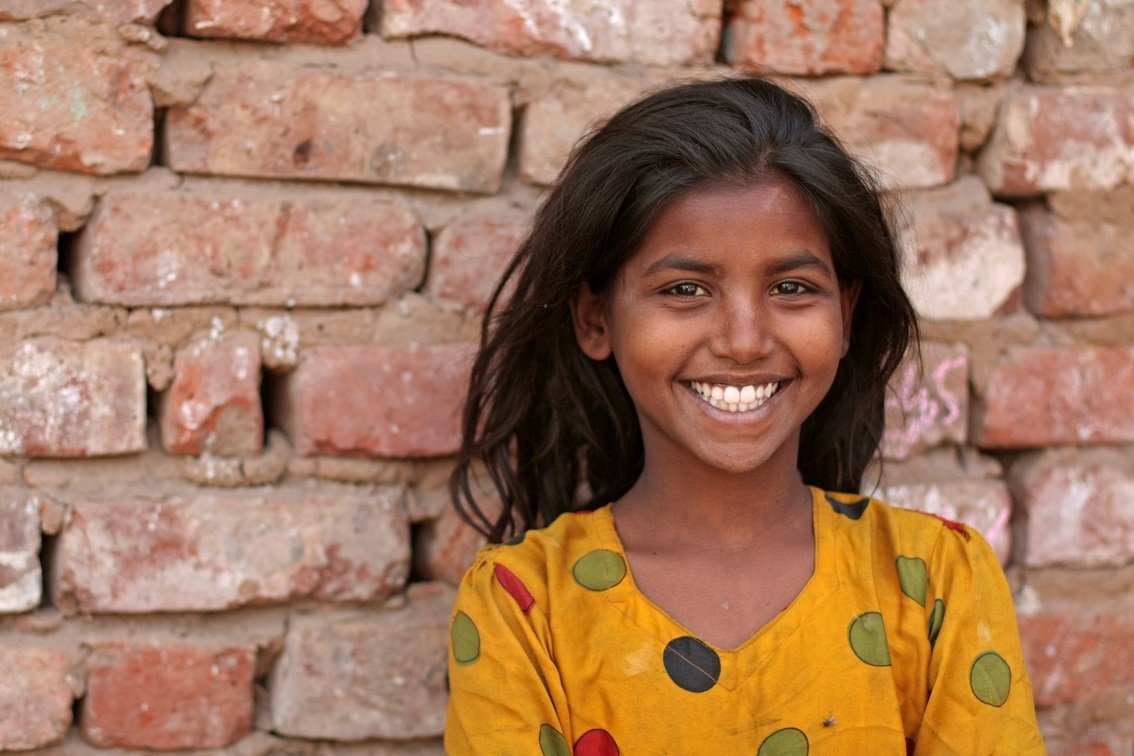The year 2000 will be remembered as a pivotal year in our history. This was the year the world came together to set a group of ambitious goals aimed at eradicating extreme poverty once and for all; the Millennium Development Goals (MDGs).
You see, extreme poverty isn't just about not having enough money. Extreme poverty can affect and disadvantage people in many different ways; hunger, education and gender inequality to name just a few.The MDGs represented the first time the world come together, united under a set of goals designed to address the issue of extreme poverty, whatever form that may be in.
In total there were 8 goals:
 -
-
---
Today, in Norway at ‘The Oslo Summit on Education for Development,’ the UN Secretary General Ban Ki-Moon launched the 2015 Millennium Development Goals Report- the final report that documents the 15-year effort to achieve the aspirational goals set in 2000.
At a press conference that included world leaders, such as the Prime Minister of Norway Erna Solberg, and the President of Rwanda, Paul Kagame, Ban Ki-Moon reported on the fantastic progress made in the last 15 years, but warned that there was still considerable work to be done if we are to ever lift people out of extreme poverty.
-
So, 15 years later...how did we do?
-
Well the short answer is, not that bad actually. Over 1 billion people have been lifted out of extreme poverty (defined as living on less than USD $1.25 a day), more children than ever before are gaining a primary education, and and the mortality rate of children under five has more than halved. These are all incredible achievements that have had a transformational effect on peoples lives and the countries they live in; there's a lot to celebrate.

Here are some of our highlights from the report:
-
Over 1 billion people have been lifted out of extreme poverty. In 1990, nearly half of the population in the developing world lived on less than USD $1.25; that has now dropped to just 14% in 2015.
The primary school net enrolment rate in the developing regions has reached 91% in 2015, up from 83% in 2000.
Many more girls are now in school compared to 15 years ago. The developing regions as a whole have achieved the target to eliminate gender disparity in primary, secondary and tertiary education.
The global under-five mortality rate has declined by more than half, dropping from 90 to 43 deaths per 1,000 live births between 1990 and 2015.
Since 1990, the maternal mortality ratio has declined by 45 per cent worldwide, and most of the reduction has occurred since 2000.
New HIV infections fell by approximately 40 per cent between 2000 and 2013, from an estimated 3.5 million cases to 2.1 million.
Over 6.2 million malaria deaths have been averted between 2000 and 2015, primarily of children under five years of age in sub-Saharan Africa. The global malaria incidence rate has fallen by an estimated 37 per cent and the mortality rate by 58 per cent.
Ozone-depleting substances have been virtually eliminated since 1990, and the ozone layer is expected to recover by the middle of this century.
Official development assistance from developed countries increased by 66 per cent in real terms between 2000 and 2014, reaching $135.2 billion.
-
But more needs to be done.
-
A lot of positive change has happened and it is right that global citizens celebrate this. But now is not the time to rest on our laurels. Yes, progress has been made, but millions of people are still being left behind. If the world is ever to see the end of extreme poverty we need to focus on tackling issues such as:
-
Gender Inequality
Women still continue to face discrimination in areas such as access to work, economic asset ownership, and decision making, both privately and publicly. It's a fact that if you’re a woman in the developing world, you’re still more likely to live in poverty than if you’re a man.
-
The Gap Between the Rich and the Poor
-
In the developing world, children from the poorest households are four times as likely to be out of school as those in the richest households. There are significant health implications as well, with under-five mortality rates almost twice as high than those of their richer counterparts.
-
Climate Change
-
Global emissions of carbon dioxide have increased by over 50% since 1990, and with climate change, it’s the poorest who suffer the most. Poor people’s livelihoods are more directly tied into natural resources, and because often they live in the most vulnerable of areas, they suffer the most.
-
Conflict
-
Conflict has forced nearly 60 million people to abandon their homes- the highest since the Second World War. On average, 42,000 people a day have to leave their home and seek protection. And often, these countries affected by conflict already have the highest poverty rates.
-
Millions Still Live in Extreme Poverty
-
There are still over 800 million people living in extreme poverty, and 160 million children under the age of five are still too small for their age due to lack of food. Currently, there are still 57 million children who are not in primary school, and about 16,000 children a day die before they even reach their fifth birthday, often by a preventable cause. Yes, the world has made incredible progress but these numbers are inexcusable.
It’s inspiring to see that so much progress has been made. People are living longer, healthier, more fulfilling lives and it’s all down to the incredible work of the international community. But as you can see, the job is far from done.
In September, world leaders will once again come together to decide a new set of goals for the next 15 years; goals that could set us on the road to ending extreme poverty once and for all. But these goals need to be ambitious and bold if they are to succeed, and it will take the political will of the entire world to make them happen. But I know this is possible.
Like the great Nelson Mandela said, "like slavery and apartheid, poverty is not natural. It is man-made and it can be overcome and eradicated by the actions of human beings."
-
It will be a monumental fight to finally eradicate extreme poverty, but it’s one that I, and millions of global citizens from around the world, are well and truly up for.